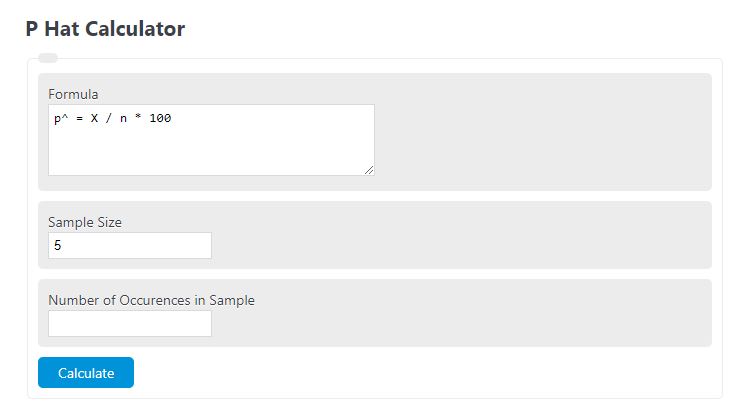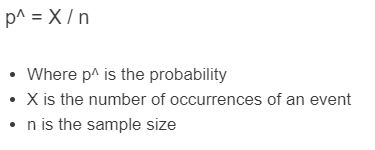Enter the sample size and the number of occurrences into the calculator to determine the p-hat.
- Conditional Probability Calculator
- Compound Probability Calculator
- Expected Frequency Calculator
- Empirical Probability Calculator
- Y-Hat Calculator
P-Hat Formula
The following formula is used to calculate p-hat (p^).
p^v = X / n
- Where p^ is the probability
- X is the number of occurrences of an event
- n is the sample size
To calculate p-hat (p^), divide the number of occurrences of an event by the sample size.
P-Hat Definition
P hat is the long form of the term p^. P^ is the probability that a given outcome will occur given a specified sample size.
In other words, it’s the probability of the event within the chosen sample and is often represented of the entire population if the sample was chosen correctly.
P-hat is most often used in the field of statistics, but statistics are used in nearly all STEM fields, so you can say that the p-hat sees important use in many fields. A formula and example of how it’s used are shown below the calculator.
P-hat Example
How to calculate p-hate?
- First, determine the sample size.
Determine the size of the sample you wish to analyze. For this example, we will say this is a sample size of 100.
- Next, determine the number of occurrences in the sample.
Measure how many occurrences of an event or parameter are found in the sample. For this example, we will say this is 10.
- Finally, calculate p-hat.
Calculate p^ using the formula. We find, p^=10/100 = .10
FAQ
P-hat, also denoted p^, is a term used in statistics to describe the probability of an event occurring base on sample size. In other words, if p is the probability of the entire population, p^ is the probability of just a subset or sample of that population.

